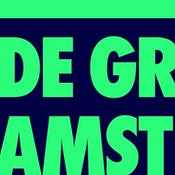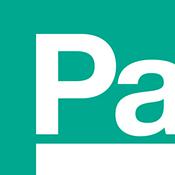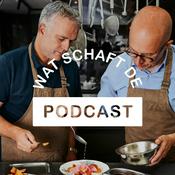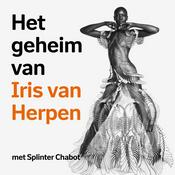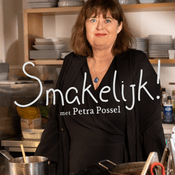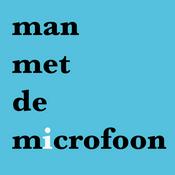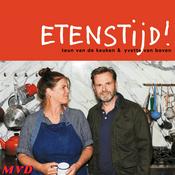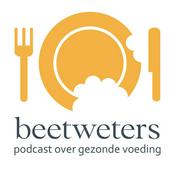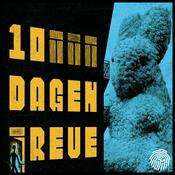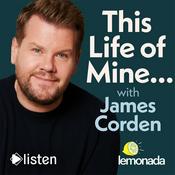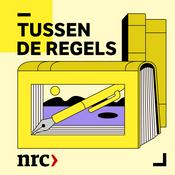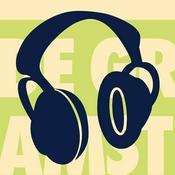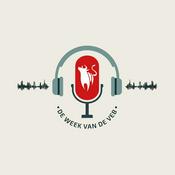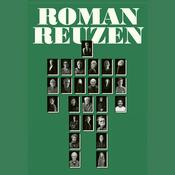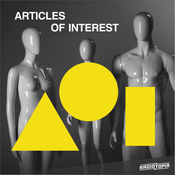94 afleveringen

90. Thinking About a Wine Trip? What to Know About Wine Educate's Vineyard Travel
18-12-2025 | 7 Min.
Resources & Links Wine Educate Newsletter: https://mailchi.mp/6648859973ba/newsletter Wine Educate Trips & Itineraries: https://www.wineeducate.com/trips Contact Joanne: [email protected] Episode 90: Thinking About a Wine Trip? What to Know About Wine Educate's Vineyard Travel In this episode, we continue our New Year goal-setting series by talking about one of the most impactful goals a wine student or enthusiast can set: visiting a vineyard. You do not need to plan a two-week international trip to learn from a vineyard visit. A day trip, weekend drive, or nearby winery can bring wine concepts to life in a way that books and classrooms cannot. Even a single visit can create lasting "aha" moments around climate, viticulture, and winemaking decisions. I also share details about Wine Educate's trips to Château Camplazens, my family's vineyard in the south of France, and walk through two experiences in particular: WSET Level 2 Award in Wines – South of France, which combines classroom instruction with vineyard learning, tastings, and regional exploration. Languedoc Food & Wine Experience, designed for all levels, focusing on regional wines, local food producers, and cultural discovery rather than formal certification. I answer common questions about these trips, including exam timing, flexibility for travel companions, and how to get to Château Camplazens by train from Paris or Barcelona. If vineyard travel has ever felt out of reach, this episode is meant to show you that it may be more accessible than you think. If you have questions about any of the trips, email me directly. It's me on the other end, and I'm always happy to help. Next week, we wrap up our 2026 planning series by talking about online wine classes and how they work. In January, we'll begin a new Sparkling Wine series. If you find the podcast helpful, please consider sharing it with a fellow wine student or enthusiast.

89. Inside the Master of Wine Program: History, Requirements, and How to Apply
11-12-2025 | 9 Min.
Resources & Links Sign up for the Wine Educate newsletter: https://mailchi.mp/6648859973ba/newsletter Masters of Wine official site: https://www.mastersofwine.org Recommended past episodes: Episode 5 – Understanding Level 1 Episode 8 – Understanding Level 2 Episode 23 – Understanding Level 3 How to Contact Us [email protected] Episode Overview In Episode 89, we continue the conversation from last week's episode on goal-setting and long-term planning for your wine education. Today's focus is the Master of Wine program — what it is, how it began, what the exam involves, and how to apply. This episode is designed to plant a seed for anyone who has ever wondered about the highest level of wine study and what it might take to get there. What the Master of Wine Is The Master of Wine, awarded by the Institute of Masters of Wine, is widely regarded as the most demanding professional wine qualification in the world. The exam assesses a candidate's ability to describe, assess, and identify wine at an exceptionally high level. Many MWs describe it as the most challenging undertaking of their careers. A Brief History The MW was created in the British wine trade in the early 1950s as a way to set a professional benchmark. The first exam was held in 1953, with 21 candidates and only six who passed. The Institute of Masters of Wine was formally established in 1955. From there, the program gradually expanded beyond the UK and beyond traditional wine merchants, eventually admitting educators, writers, and international candidates. Today, there are just over 500 people who have ever earned the title, representing about 30 countries. What the Exam Involves The MW exam is completed over multiple days and includes five theory papers and three practical tasting papers. Each tasting exam features twelve wines, and candidates must assess variety, origin, winemaking, quality, and commercial aspects. In 1999, the Research Paper was introduced — a 6,000–10,000 word original research project on a topic of the candidate's choosing. All three components must be passed to earn the MW. The Stages of the Study Program Students accepted into the program complete three stages: Stage 1: A five-day seminar, additional course days, and a Stage 1 Assessment consisting of a 12-wine blind tasting and two essays. Stage 2: Additional seminars and coursework, culminating in the full MW theory and tasting exams held each June. Stage 3: The Research Paper, an in-depth, original piece of work contributing to the world of wine. Throughout the program, MWs volunteer their time as mentors and teachers, guiding students and supporting their progress. Eligibility and How to Apply Applicants must meet the following criteria: Professional involvement in the wine industry (primary livelihood or 20+ hours per week) At least three years of industry experience A qualification equivalent to the WSET Diploma A professional reference, ideally from a Master of Wine Applications open once a year, with the next application period beginning April 20, 2026. Applicants complete an online form along with theory and practical entrance exams. Why This Matters for Students at Any Level Even if you're currently at Level 1 or Level 2, understanding the MW pathway can help you begin planning your long-term goals. Achieving this qualification can take many years, but it is absolutely possible with a clear roadmap, consistent study, professional experience, and financial planning. Scholarships, employer sponsorships, and thoughtful career development can all play a role. If you're just starting out, Wine Educate offers Levels 1 through 3, and past episodes 5, 8, and 23 give useful overviews of each level and how to approach your studies. Stay Connected If you haven't subscribed to the newsletter, visit wineeducate.com and click the green sign-up button. Each week's newsletter includes Level 3 essay questions, Level 2 quizzes, and Level 1 wine tips to support your studies.

88. What Is the WSET Diploma? Your Complete Guide to Level 4 Wine Certification
04-12-2025 | 11 Min.
Resources & Links Sign up for the weekly Wine Educate newsletter for study tips and class announcements: https://mailchi.mp/6648859973ba/newsletter Explore upcoming WSET Level 1, 2, and 3 classes: www.wineeducate.com Listen to past episodes referenced today: Episode 5: Level 1 — What to Expect & How to Prepare Episode 8: Level 2 — What to Expect & How to Prepare Episode 28: Level 3 — What to Expect from the Course and the Exam Episode 4: Wine Scholarships How to Contact Us Questions about WSET classes, study plans, or next steps? Email Joanne at [email protected] Episode Overview In this episode, Joanne introduces the WSET Level 4 Diploma, the next step for students who have completed the Level 3 Award in Wines. With the final Level 3 classes of the year wrapping up, many students naturally begin to wonder what comes next. The Diploma is a major milestone in wine education, and this episode offers a clear, approachable explanation of what it involves, how it is structured, and what students should expect. Joanne explains the six Diploma units (D1 through D6), each with its own focus and weighting toward the final grade. She outlines how each unit is assessed, including the multi-day theory and tasting structure for D3, and the independent research assignment required for D6. Listeners receive guidance on the level of commitment involved, including the minimum study hours recommended by WSET and the realistic timeframe for completing the program. The episode also addresses the financial side of Diploma study, an important but often overlooked component. Joanne breaks down tuition, travel, and wine-sampling costs, and points listeners toward scholarship opportunities highlighted in Episode 4. Finally, she offers perspective on whether the Diploma is "worth it," sharing her own experience and the value it brings to a wine professional's knowledge, tasting ability, and long-term goals. This episode is part of a short end-of-year series designed to help listeners think about their 2026 wine goals in a thoughtful, informed way. Next week, Joanne explores the Masters of Wine program, the highest level of achievement in wine education and the natural next step after the Diploma.

87. Beaujolais Beyond Nouveau: History, Appellations, and the Future of Gamay
27-11-2025 | 12 Min.
Resources & Links Sign up for the Wine Educate newsletter (weekly WSET study tips for Levels 1, 2, and 3): https://mailchi.mp/6648859973ba/newsletter Explore upcoming WSET classes and trips: www.wineeducate.com Listen to the Wine Educate Podcast on: Apple Podcasts Spotify YouTube (video versions available) If you missed last week's episode on Beaujolais Nouveau (Episode 86), listen to that one first for context. How to Contact Us Have a question, suggestion, or Beaujolais story to share? Email Joanne at [email protected] Instagram: @wineeducate Episode Overview In this episode, we stay in Beaujolais but move beyond Beaujolais Nouveau. Building on Episode 86, Joanne looks at the broader Beaujolais region: its geography, history, appellation hierarchy, and some very exciting developments that are shaping its future. This episode is designed to support WSET Level 2 and Level 3 students, but it is also accessible for curious wine enthusiasts who want to understand why Beaujolais is such an interesting region to explore. Joanne also explains why Beaujolais can be one of the most rewarding regions for everyday collectors who do not necessarily have a Burgundy-sized budget but still want to experience site expression, aging potential, and nuance. Where Is Beaujolais and Why Does It Matter? Beaujolais is in France, sandwiched between Burgundy to the north and the Rhône to the south. The region is about 34 miles (55 km) long and 7–9 miles (11–14 km) wide, running from the Mâconnais down toward Lyon. The climate is moderate with four distinct seasons, and the landscape divides roughly into: Northern and western hills with pink granite and poorer soils Southern flatter, more fertile areas This split in topography and soil type directly influences wine styles and quality. A Short History of Beaujolais: Romans, Monks, and Nobles Joanne walks through a brief but vivid history of the region: Romans Beaujolais sat on a Roman trade route. Retired Roman soldiers were often granted land and vines as part of their "retirement package." Several names still reflect this legacy: Brouilly (from the Roman lieutenant Brulius) Fleurie (from the legionary Florius) Juliénas (from Julius Caesar) Monks After the Romans, monastic orders took over much of the vineyard work. Just as in Burgundy, monks carefully observed and recorded which sites produced better wines, effectively mapping out the best terroirs and laying groundwork for today's hierarchy. Nobles and the Burgundy Feud Burgundy wanted nothing to do with Gamay. Philippe the Bold led what Joanne jokingly describes as one of wine history's biggest "smear campaigns," calling Gamay a harmful, bitter variety and ordering it to be pulled out of Burgundy. This pushed Gamay south into Beaujolais, which in hindsight turned out to be a positive shift: Gamay performs better on the low-nutrient pink granite soils found there. Gamay and the Role of Granite Gamay can be very vigorous on fertile soils, producing too many leaves and large bunches that dilute quality. On the poor, pink granite soils of northern and western Beaujolais, yields are naturally limited and flavors become more concentrated. Vines in many top sites are trained in gobelet (bush vine) form, which: Suits the region's traditional style Often requires hand harvesting, especially for Nouveau and the crus In flatter, more mechanizable areas and for some Beaujolais and Beaujolais-Villages, you see more wire-trained vines to allow machine work. The Beaujolais Appellation Hierarchy Joanne breaks down the three main tiers and connects them to geography and style: Beaujolais AOC Appellation established in 1937 Represents roughly 34% of total production Mostly from the flatter, more fertile southern vineyards Generally the lightest, simplest styles with fresh, easy fruit Predominantly Gamay, though a small amount of Chardonnay and a little Pinot Noir exist Beaujolais-Villages AOC Appellation established in 1938 Around 26% of total production Located in the hillier north and north-west on poorer, granite-influenced soils Can come from 39 named villages, which can append their name to the appellation (though in practice most wines are blends from several villages) Wines typically have: Deeper color More flavor concentration A more pronounced mineral character from the granite Beaujolais Crus (10 Crus) The top tier of the region From north to south: Saint-Amour Juliénas Chénas Moulin-à-Vent Fleurie Chiroubles Morgon Régnié Brouilly Côte de Brouilly For WSET: Level 2: focus on Fleurie Level 3: focus on Moulin-à-Vent, Fleurie, Morgon, and Brouilly Styles: Moulin-à-Vent and Morgon: more structured, with greater aging potential Fleurie and Brouilly: lighter, more perfumed, more suited to earlier drinking Well-made crus can age from five up to around ten years, offering a rare opportunity for affordable cellaring and exploration. Why Beaujolais Is a Great Region for Collectors Joanne points out that while top Burgundy is often out of reach for many wine drinkers, Beaujolais offers: Distinct terroirs and crus to explore Wines with real aging potential at a more approachable price point The chance to "collect" over time without needing a grand cru budget For students and enthusiasts, this makes Beaujolais an ideal region to experiment with buying a case, following vintages, and watching wines evolve in bottle. The Future of Beaujolais: Clones, Soils, and Potential Premier Crus There is a lot happening behind the scenes in Beaujolais: National Gamay Conservatory (from 2003) Has identified and collected around 1,000 different Gamay types/clones, highlighting the genetic diversity within the variety. Soil Studies (from 2009) A detailed soil survey identified around 300 different soil variations within the region. For WSET Level 3, you only need to remember "granite" as the key idea, but this research shows how much nuance exists in reality. Lieu-dit and Potential Premier Cru Status (from 2024) Some producers in Fleurie have formally applied to have certain lieux-dits (named, recognized sites) elevated to premier cru status. Other crus are expected to follow this path. The process may take 8–10 years, but it signals how seriously the region is being reassessed in terms of quality and terroir. All of this points to Beaujolais being a region on the rise, with increasing recognition of its complexity and age-worthy wines. Support for WSET Students Joanne reminds listeners that: The podcast is meant to support and deepen what you learn in WSET Level 2 and Level 3, not replace the courses themselves. For Level 2, focus on: The idea of Beaujolais as a region Beaujolais AOC, Beaujolais-Villages AOC Fleurie as a key cru For Level 3, add: More detail on the crus (Moulin-à-Vent, Morgon, Fleurie, Brouilly) Appellation hierarchy linked to site and soil Styles and aging potential More technical detail on carbonic maceration, semi-carbonic maceration, and whole-bunch fermentation will be explored in Joanne's upcoming Level 3–focused podcast, launching in the new year. Newsletter and Study Resources If you are preparing for WSET: The Wine Educate newsletter includes: Weekly study tips for Levels 1, 2, and 3 For Level 3 students, a new essay question each week to practice the hardest part of the exam Sign up at: https://mailchi.mp/6648859973ba/newsletter Join the Conversation Joanne would love to see what Beaujolais you are drinking: Email: [email protected] Instagram: @wineeducate Share your bottles, your favorite crus, or your Beaujolais questions, whether you are in the United States or tuning in from elsewhere in the world.

86. What Is Beaujolais Nouveau? History, Release Day Rules, and Carbonic Maceration
20-11-2025 | 9 Min.
Sign up for the Wine Educate Newsletter: https://mailchi.mp/6648859973ba/newsletter How to Contact Us [email protected] Episode Summary In this episode, Joanne dives into Beaujolais Nouveau and why the third Thursday in November is one of the most unique days in the wine world. She explores what Beaujolais Nouveau is, how it originated, how it is made, and why it became one of the most recognizable wine traditions in the world. From Parisian celebrations to American Thanksgiving tables, Beaujolais Nouveau is more than just a wine. It is a global moment of shared release, tied to history, marketing, and a very specific winemaking technique. What Is Beaujolais Nouveau? Beaujolais Nouveau is a wine produced in the Beaujolais region of France from the Gamay grape. It is specifically made for early drinking and is released legally on the third Thursday of November following the vintage. It cannot be sold after August 31 of the following year, as it is meant to be enjoyed fresh and young rather than aged. Only Beaujolais and Beaujolais-Villages wines are permitted to be labeled as Beaujolais Nouveau. The 10 Beaujolais Crus cannot be sold as Nouveau. A Brief History of Beaujolais Nouveau The tradition of Beaujolais Nouveau began in the early 1950s. As France's railroad system expanded in the 19th century, Beaujolais wines could be shipped easily into Paris, where they quickly gained popularity. In the 1950s, Parisians embraced the tradition of celebrating the end of harvest by drinking freshly made wine. In 1951, the Union Interprofessionnelle des Vins du Beaujolais (UIVB) officially set November 15th as the release date. In 1985, France's INAO changed the date to the third Thursday of November as a strategic move to align with American Thanksgiving. This helped cement Beaujolais Nouveau's place as a global celebration wine, linked closely with festive meals and seasonal gatherings. It reached its peak of global popularity in 1999 before declining in the early 2000s. That decline helped refocus attention on Beaujolais' more serious wines and long-term potential. Today, Beaujolais Nouveau represents around 20% of total Beaujolais production. How Beaujolais Nouveau Is Made Beaujolais Nouveau is produced using carbonic maceration, a technique that gives the wine its signature fruity, low-tannin style. Carbonic maceration involves: Placing whole, uncrushed bunches of grapes into a sealed tank. Filling the tank with CO₂ to remove all oxygen and create an anaerobic environment. Allowing intracellular fermentation to begin inside each grape. Once the grapes reach around 2% alcohol, their skins split naturally. The grapes are then pressed, and the remainder of the must finished regular fermentation. This method extracts color but very little tannin, resulting in wines that are soft, low in tannin, and highly aromatic. Common flavor and aroma notes include: Kirsch Banana Bubblegum Cinnamon-like spice Fresh red berries Due to its light structure and bright acidity, Beaujolais Nouveau is best served slightly chilled. Drinking Beaujolais Nouveau Today Although large producers made Beaujolais Nouveau famous, many small producers now create their own versions, adding new energy and quality to the category. Joanne encourages listeners to try a bottle, whether from France or from excellent producers in Oregon and Washington State who also make Nouveau-style wines. Take a photo of your Beaujolais Nouveau and share it: Email: [email protected] Instagram: @wineeducate No matter where you are in the world, you are sharing this moment with wine lovers everywhere on the same day.
Meer Kunst podcasts
Trending Kunst -podcasts
Over Wine Educate: Wine Lessons, Travel & WSET Study Prep
Luister naar Wine Educate: Wine Lessons, Travel & WSET Study Prep, De Groene Amsterdammer Podcast en vele andere podcasts van over de hele wereld met de radio.net-app

Ontvang de gratis radio.net app
- Zenders en podcasts om te bookmarken
- Streamen via Wi-Fi of Bluetooth
- Ondersteunt Carplay & Android Auto
- Veel andere app-functies
Ontvang de gratis radio.net app
- Zenders en podcasts om te bookmarken
- Streamen via Wi-Fi of Bluetooth
- Ondersteunt Carplay & Android Auto
- Veel andere app-functies


Wine Educate: Wine Lessons, Travel & WSET Study Prep
download de app,
luisteren.
